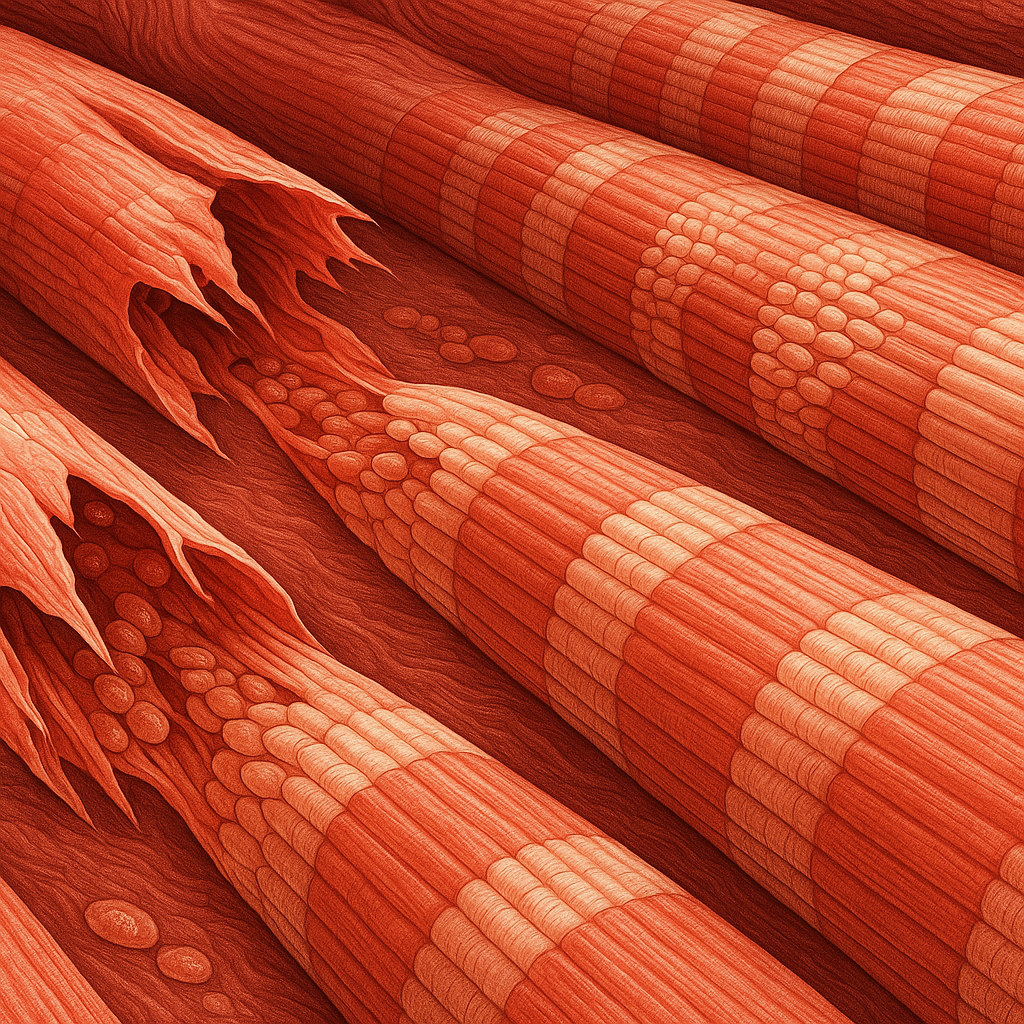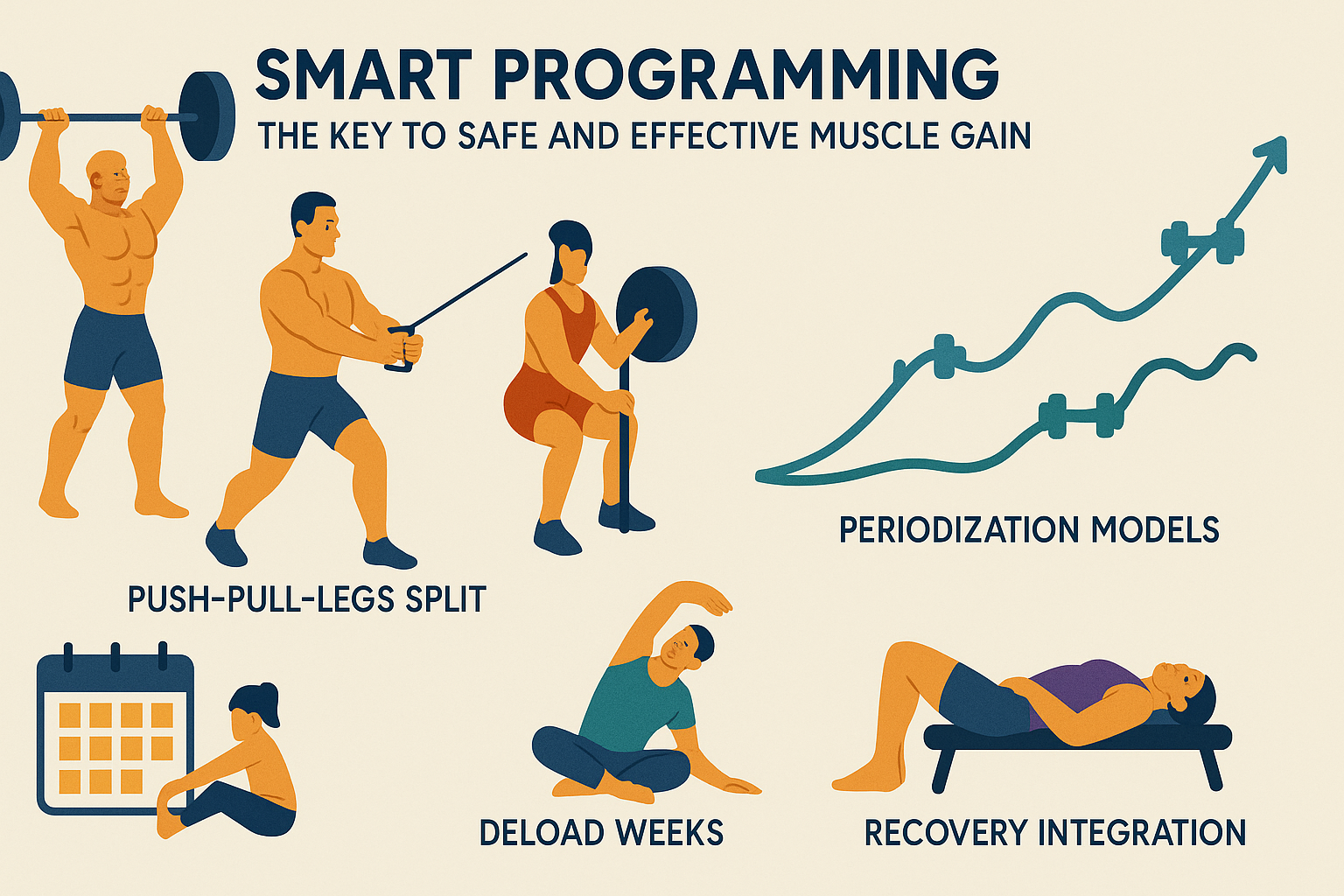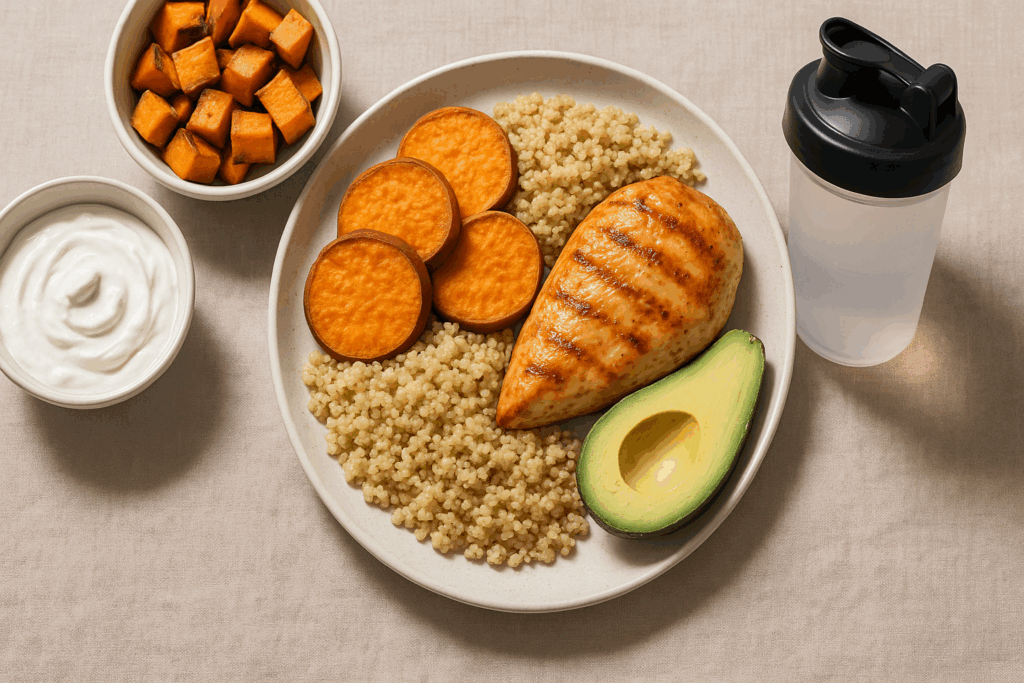Achieving impressive strength and physique gains isn’t just about lifting heavier weights or eating more protein. For those who want to get bigger in a safe, sustainable, and intelligent manner, muscle-building requires a multifaceted strategy rooted in science, consistency, and self-awareness. Whether you’re a newcomer to resistance training or someone looking to push past a plateau, understanding the physiological, nutritional, and psychological aspects of hypertrophy and strength development can empower you to make more informed and effective decisions. This comprehensive guide explores the most essential muscle-building strategies to help you get bigger and stronger while minimizing the risk of injury and maximizing long-term health.
You may also like: The Ultimate Hypertrophy Workout Program for Building Strength and Size
Why Building Muscle the Right Way Matters
Too often, beginners and even intermediate lifters dive headfirst into overly aggressive routines that promise fast results. While early gains are common due to neuromuscular adaptations, pursuing rapid results without understanding proper technique, recovery, or nutrition can lead to stagnation or worse—injury. Building muscle safely is about more than the gym. It encompasses sleep quality, nutritional adequacy, hormonal balance, stress regulation, and intelligent programming. Moreover, those who want to get bigger without compromising their joints, connective tissues, or long-term metabolic health must adopt a mindset that prioritizes longevity as much as aesthetics or performance.
Proper muscle-building reduces the likelihood of chronic inflammation, overtraining syndrome, and long-term joint degradation. With proper guidance, your strength gains will not only be more impressive but also more enduring. Approaching hypertrophy with intention and care ensures that your foundation is strong—physically and mentally—allowing you to evolve as an athlete with greater resilience and control.

Understanding Muscle Growth: The Science Behind Hypertrophy
Muscle growth, also known as hypertrophy, is the result of a series of complex biological processes that occur in response to resistance training. When you lift weights or perform bodyweight exercises, you create microtears in your muscle fibers. The body then repairs these tears through protein synthesis, making the fibers thicker and stronger over time.
There are two main types of hypertrophy: myofibrillar and sarcoplasmic. Myofibrillar hypertrophy involves the increase in size and number of the contractile units in the muscle, leading to greater strength. Sarcoplasmic hypertrophy, on the other hand, involves an increase in the fluid and energy-storing components of the muscle, contributing to greater size but less directly to strength. Understanding these differences is key to programming workouts that target specific goals—whether you’re aiming for powerlifting performance or a bodybuilder’s physique.
Additionally, muscle growth is regulated by various factors, including mechanical tension, metabolic stress, and muscle damage. Progressive overload—consistently increasing the demand placed on the muscles—is one of the most effective principles to trigger hypertrophy. Hormonal influences, particularly testosterone, growth hormone, and insulin-like growth factor-1 (IGF-1), also play vital roles in this process. Therefore, optimizing your lifestyle for hormonal health is as essential as nailing your training splits.

How to Get Big by Prioritizing Compound Movements
One of the most effective ways to get bigger is to prioritize compound movements in your training program. Compound exercises, such as squats, deadlifts, bench presses, and overhead presses, recruit multiple muscle groups and joints simultaneously. This not only allows for greater total muscle stimulation but also leads to improved neuromuscular coordination and efficiency.
These movements are highly effective at activating the largest and most anabolic muscle fibers in the body. For instance, barbell squats engage not only the quadriceps but also the glutes, hamstrings, lower back, and core. Deadlifts target the posterior chain while demanding grip strength and spinal stability. Because of their systemic effect, compound lifts have been shown to elicit a more significant hormonal response, including temporary spikes in testosterone and growth hormone—hormones critical for hypertrophy.
Another advantage of compound exercises is their scalability. You can progressively overload these movements more effectively than isolation exercises due to their biomechanical advantage and load-bearing capacity. For example, adding five pounds to your deadlift is both measurable and meaningful, offering a clear pathway to long-term strength progression. Moreover, compound lifts teach you to move well under load—a critical skill that translates into better movement mechanics in daily life and reduces injury risk during both training and non-training activities.

Smart Programming: The Key to Safe and Effective Muscle Gain
An intelligently designed program is crucial for those looking to build muscle efficiently and safely. Random workouts or following influencer routines online often results in imbalanced development, overuse injuries, and burnout. Instead, effective programming involves structured progression, movement variation, and sufficient recovery periods tailored to your training age, goals, and physiology.
Start by choosing a training split that fits your schedule and recovery capacity. The classic push-pull-legs or upper-lower splits offer a balance of volume and frequency, allowing each muscle group to be trained multiple times per week while leaving room for rest and adaptation. Those with more training experience may opt for a five-day split, focusing on individual muscle groups per session for increased volume and specialization.
Equally important is periodization—systematically varying the intensity, volume, and exercise selection over time. Linear periodization gradually increases intensity while decreasing volume, while undulating periodization varies both within a week. Incorporating deload weeks every 4–6 weeks allows your body to recover fully and avoid plateaus. Smart programming also accounts for recovery by ensuring that high-intensity days are followed by lower-intensity or rest days to prevent cumulative fatigue.

Recovery as a Muscle-Building Priority
Muscle growth does not occur during your workouts—it happens during recovery. Without sufficient rest, even the most scientifically optimized training program will fail to deliver results. Recovery encompasses both passive strategies, such as sleep and rest days, and active recovery techniques, including light movement, stretching, and mobility work.
Sleep is perhaps the most underrated factor in muscle growth. During deep sleep, the body releases growth hormone, a key driver of muscle repair and regeneration. Research consistently shows that those who get less than seven hours of sleep per night experience impaired recovery, reduced insulin sensitivity, and decreased muscle protein synthesis. For optimal muscle-building outcomes, aim for 7–9 hours of high-quality sleep each night and maintain a consistent sleep-wake cycle.
Nutrition also plays a vital role in recovery. Consuming adequate protein, particularly in the post-workout window, supports the repair of damaged muscle tissue. Carbohydrates help replenish glycogen stores depleted during intense training, while healthy fats support hormonal health. Recovery is further enhanced by hydration, micronutrient balance, and stress reduction techniques such as breathwork or meditation, all of which regulate the autonomic nervous system and support parasympathetic activity.

Strategic Nutrition to Get Bigger Without Gaining Excess Fat
When learning how to get big, it’s essential to distinguish between quality mass gain and indiscriminate bulking. Too often, the pursuit of size leads to excessive calorie intake without regard to nutrient density, resulting in unnecessary fat gain. A strategic nutritional approach ensures you’re supplying your body with the raw materials needed for muscle growth without sacrificing metabolic health or aesthetics.
The cornerstone of muscle-building nutrition is protein. Aim for 0.7–1 gram of protein per pound of body weight per day, distributed across 4–6 meals to optimize muscle protein synthesis. High-quality sources such as eggs, chicken breast, lean beef, Greek yogurt, cottage cheese, and whey protein offer a complete amino acid profile and high bioavailability.
Equally important are carbohydrates, which serve as the primary fuel source for anaerobic training. Whole-food carbs such as oats, sweet potatoes, quinoa, and brown rice provide sustained energy, fiber, and essential nutrients. Fats support hormone production, particularly testosterone, and should comprise around 20–30% of your total calorie intake. Focus on sources like avocados, olive oil, nuts, and fatty fish.
Meal timing also matters. Consuming a balanced meal containing protein and carbohydrates within 30–60 minutes post-workout enhances recovery and muscle protein synthesis. On non-training days, reduce total calorie intake slightly to match your lower energy expenditure, maintaining enough nutrients to support recovery without overfeeding.
Get Bigger Without Breaking Down: Injury Prevention and Joint Health
The drive to get bigger must be balanced with the imperative to train safely. Injuries can derail months of progress, negatively impact motivation, and contribute to long-term dysfunction. Therefore, protecting your joints, tendons, and ligaments should be a top priority in any muscle-building regimen.
Proper warm-ups are non-negotiable. A general warm-up, such as five to ten minutes on a stationary bike or treadmill, increases core temperature and blood flow. This should be followed by dynamic mobility work targeting the joints and muscle groups you plan to train. Movement-specific warm-ups, such as ramp-up sets using lighter weights, prepare the nervous system and establish optimal movement patterns for heavy lifts.
Exercise technique is another critical component of injury prevention. Prioritize form over ego by using a weight that allows you to perform each rep with control and a full range of motion. Improper mechanics not only reduce the effectiveness of the movement but also place undue stress on joints and connective tissues. Enlisting the guidance of a coach or filming your lifts can help you identify and correct flaws before they become problematic.

Progressive Overload and Adaptation: The Science of Getting Stronger
Progressive overload is a foundational principle for those seeking to get bigger and stronger. It refers to the gradual increase in stress placed on the body during training, which forces the muscles to adapt and grow. Without progressive overload, the body has no reason to build additional muscle tissue, and your progress will eventually stall.
There are many ways to apply progressive overload beyond simply adding more weight to the bar. Increasing training volume (sets × reps × weight), improving exercise execution, shortening rest periods, increasing training frequency, or even increasing time under tension are all viable methods. For example, if you bench press 135 pounds for three sets of eight reps this week, you might aim for nine reps per set next week before increasing the load.
What’s crucial is that these changes are measured and purposeful. Overloading too quickly can overwhelm the body’s ability to recover, leading to plateaus or injury. Conversely, underloading won’t produce the necessary stimulus for adaptation. Striking the right balance requires keeping detailed training logs, monitoring performance, and adjusting weekly based on how your body responds.
It’s also essential to understand that adaptation isn’t linear. You may experience fast progress initially, followed by plateaus. These plateaus are opportunities to reevaluate your approach, tweak your programming, and reestablish progressive overload through new variables. Cycling between strength-focused phases and hypertrophy-focused phases is another effective way to keep the body adapting while supporting recovery and mental engagement.

The Role of Mind-Muscle Connection in Hypertrophy
For those trying to understand how to get big effectively, the concept of mind-muscle connection can be transformative. This technique involves consciously focusing on the target muscle during an exercise to maximize its activation. While this may sound abstract, emerging research and anecdotal evidence suggest that deliberate mental focus can lead to greater muscle recruitment and, ultimately, improved hypertrophy.
Mind-muscle connection is especially important during isolation exercises such as biceps curls or leg extensions, where it’s easy to let momentum or secondary muscles take over. By intentionally contracting the target muscle and maintaining that tension throughout the movement, you can enhance muscle fiber engagement. This principle is often underappreciated by beginners who focus more on completing reps than on performing them with intention.
To develop this connection, start with lighter weights and slow, controlled reps. Visualize the muscle working throughout the movement, and eliminate distractions during training. Over time, this mental discipline becomes second nature, allowing you to extract more growth from each rep, especially in advanced hypertrophy phases where marginal gains matter most.
Additionally, training with intention helps reduce injury risk. By focusing on the quality of each rep, you’re less likely to use compensatory patterns that stress the joints or connective tissues. In the long run, cultivating a strong mind-muscle connection not only enhances muscle development but also improves training mindfulness and consistency.
Get Bigger With Consistency, Not Complexity
In a fitness culture dominated by viral workout trends, exotic exercises, and constantly changing programs, it’s easy to forget that consistency trumps complexity. You don’t need to reinvent your workouts every week to get results. In fact, constantly switching exercises can prevent you from mastering movement patterns or effectively tracking progressive overload.
Getting bigger requires showing up, again and again, to apply a slightly greater stimulus than before. This means committing to a solid routine, tracking your progress, and executing it with discipline over weeks and months—not just days. Boring may not be glamorous, but it’s effective. The basics—like squats, presses, rows, and deadlifts—still form the foundation of nearly every successful strength and hypertrophy program for a reason.
Moreover, consistency applies beyond the gym. Consistent sleep patterns, meal timing, hydration, and stress management all contribute to your body’s ability to recover, adapt, and grow. Inconsistent training paired with haphazard recovery habits will sabotage even the most advanced program. Conversely, a basic but consistent approach can yield remarkable results.
Remember, elite athletes and bodybuilders don’t rely on magic exercises or secret hacks. They rely on years of disciplined execution. If you want to get bigger, your greatest tool isn’t novelty—it’s unwavering adherence to the fundamentals, executed over time with precision and purpose.
How to Get Big Without Letting Your Ego Take Over
Ego lifting is one of the most common pitfalls among lifters who are eager to see rapid gains. This term refers to lifting heavier weights than you can control, often at the expense of proper form. While it may feel satisfying to move impressive loads, ego lifting often leads to poor muscle activation, limited progress, and an increased risk of injury.
To build muscle safely, humility and patience must guide your training decisions. Focus on mastering form before chasing numbers. This doesn’t mean avoiding heavy weights—in fact, lifting heavy is essential for strength development—but it does mean earning the right to increase loads by first demonstrating flawless technique.
Controlled, full-range reps are far more effective for muscle growth than jerky, incomplete reps with excessive momentum. Filming your lifts or working with a coach can provide objective feedback on your form. Use training tools like tempo work (e.g., 3-second negatives) or pauses to enhance time under tension without adding unnecessary weight.
Your ego should never dictate your programming. Instead, let performance data, physical feedback, and long-term vision drive your choices. The gym is a place for disciplined execution, not performance theater. Every rep should have a purpose, and every set should move you closer to your goal of building muscle with integrity and intelligence.
Supplements That Support Safe Muscle Growth
Supplements can play a supportive role in your muscle-building journey, but they should never replace a solid training and nutrition foundation. When used wisely, certain supplements can enhance performance, recovery, and muscle protein synthesis—especially for those who train hard and eat well.
Creatine monohydrate is one of the most researched and effective supplements for strength and hypertrophy. It increases the availability of adenosine triphosphate (ATP), the energy currency of your cells, allowing for more reps and greater training volume. Creatine also promotes cell volumization and may aid recovery, with minimal side effects when taken at 3–5 grams per day.
Whey protein is another staple, providing a fast-digesting, high-quality protein source rich in essential amino acids and leucine, the key trigger for muscle protein synthesis. Consuming whey protein post-workout or between meals can help you meet your daily protein targets more easily, especially for those with higher caloric needs.
Other useful supplements include omega-3 fatty acids for joint health and inflammation control, vitamin D for hormonal balance and immunity, and magnesium to support muscle function and recovery. However, always verify that supplements are third-party tested for purity and avoid those with proprietary blends or unverified claims. A supplement may help you get bigger, but it should only ever act as a complement—not a crutch.
Sustainable Motivation and Mental Focus in Muscle Building
The mental game is just as important as the physical. Staying motivated, especially during long periods of plateau or slow progress, is key to building muscle over the long haul. Unlike quick-fix fat loss programs, hypertrophy requires months—sometimes years—of dedicated effort.
Start by establishing a clear “why.” Whether it’s improving health, gaining confidence, or excelling in sports, anchoring your goals in something meaningful keeps you grounded. Break your long-term goal into short-term milestones, such as adding 10 pounds to your squat or gaining one inch on your arms. These small wins build momentum and provide positive reinforcement.
Visualization and mental rehearsal can also enhance performance. Elite athletes often use these techniques to improve neural activation, reduce anxiety, and strengthen self-belief. Practicing mindfulness during training—focusing on each rep, each breath—keeps you present and engaged, turning workouts into meditative experiences rather than chores.
Avoid burnout by periodically revisiting your goals, adjusting your routine, and allowing for phases of active rest or new training stimuli. Muscle-building isn’t a sprint; it’s a marathon. Cultivate patience, resilience, and self-compassion, and you’ll find yourself progressing steadily without burning out or losing sight of your purpose.
Frequently Asked Questions: Expert Insights for Building Muscle Safely and Effectively
How does sleep quality influence your ability to get bigger?
Sleep quality is often the silent partner in the muscle-building equation. While the quantity of sleep matters, the depth of your sleep cycles—particularly time spent in slow-wave sleep—has a direct impact on growth hormone secretion and protein synthesis. Poor sleep hygiene, such as inconsistent sleep schedules, excessive blue light exposure, and elevated cortisol levels, can impair recovery and reduce muscle hypertrophy. Moreover, sleep affects your appetite-regulating hormones, which may lead to poor dietary choices that undermine your training efforts. Prioritizing sleep hygiene—like winding down with a consistent pre-bed routine and avoiding caffeine late in the day—is one of the simplest ways to naturally support your body’s ability to get bigger.
What psychological strategies can help you stay consistent when trying to get bigger?
Building muscle is as much a mental challenge as it is a physical one. Cognitive techniques like visualization and goal anchoring can significantly improve adherence to a training regimen. For example, visualizing your physique at the end of a 16-week block may reinforce daily discipline and reduce training fatigue. Habit stacking—linking your workout to another non-negotiable habit like brushing your teeth—can also create automaticity, minimizing missed sessions. Additionally, keeping a mental performance journal that tracks emotional states, energy levels, and perceived exertion helps identify motivational patterns that influence your long-term ability to get bigger consistently.
Why do some people find it harder to get bigger despite following similar routines?
Not all muscle-building responses are created equal, and inter-individual variability plays a major role. Factors such as fiber-type dominance, mitochondrial efficiency, and genetic polymorphisms affecting anabolic hormone receptors can significantly influence how someone responds to training. Some individuals may also have gut microbiomes that more effectively extract and utilize nutrients from food, giving them a metabolic edge. Additionally, psychological factors—like resilience under fatigue, pain tolerance, and focus—can indirectly influence intensity and volume. Understanding that your rate of progress is unique is essential; rather than comparing yourself to others, analyze your own data to fine-tune your path on how to get big.
What are the metabolic implications of trying to get bigger through aggressive bulking?
Aggressive bulking strategies can rapidly increase body mass but often at the cost of metabolic flexibility and insulin sensitivity. Rapid weight gain, particularly from ultra-processed surplus calories, may lead to increased fat deposition around the liver and visceral organs, which can interfere with metabolic signaling. This often triggers unwanted outcomes such as fatigue, poor glucose tolerance, and impaired workout recovery. A lean bulk—where the caloric surplus is modest and nutrient-dense—allows for cleaner gains with better hormonal stability. Those who want to get bigger without compromising long-term health should monitor markers like fasting insulin, triglyceride levels, and sleep quality during a bulking phase.
How to get big without compromising joint health over time?
Training with longevity in mind requires a strategic approach to joint health, especially as load intensity increases. Utilizing a mix of free weights and machines can distribute stress and reduce repetitive strain on connective tissues. Incorporating unloaded mobility drills, such as controlled articular rotations and band-resisted movements, maintains synovial fluid circulation and joint capsule health. Supplementing with collagen peptides in conjunction with vitamin C before training has been shown to improve tendon integrity in some studies. Deload weeks and autoregulated training—where you adjust intensity based on recovery cues—help prevent chronic joint inflammation while allowing you to still get bigger in a sustainable manner.
What role do digestive health and nutrient absorption play in helping you get bigger?
It’s not just what you eat but what you absorb that determines your anabolic potential. Individuals with poor gut health—manifesting as bloating, irregular bowel movements, or food sensitivities—may have impaired protein assimilation, which can limit muscle recovery and growth. Digestive enzymes, fermented foods, and strategic probiotic supplementation may enhance gut flora diversity and nutrient uptake. Additionally, reducing inflammation through omega-3 fats and polyphenol-rich foods can improve the integrity of the gut lining. For those serious about how to get big, prioritizing digestion ensures that your nutritional efforts actually translate into cellular repair and growth.
Can tracking heart rate variability (HRV) help you train smarter as you try to get bigger?
Heart rate variability (HRV) has emerged as a useful biofeedback tool for assessing autonomic nervous system balance and recovery readiness. A consistently low HRV may signal accumulated fatigue, even if you feel mentally ready to train. Integrating HRV tracking into your routine allows you to make data-driven decisions about whether to push or dial back on a given day. This minimizes the risk of overreaching, which can derail your progress if unchecked. Using HRV alongside other metrics like sleep quality and resting heart rate offers a holistic picture of recovery, ensuring your efforts to get bigger are aligned with your body’s current capacity.
How to get big while training through injuries or chronic conditions?
Training with limitations doesn’t mean you have to forfeit gains; it simply requires adaptation and creativity. Isometric training, for instance, can preserve and even build muscle without placing strain on injured joints. Blood flow restriction training with light loads offers another low-impact hypertrophy option that minimizes joint wear. Functional movement assessments can uncover compensation patterns that exacerbate injuries, enabling corrective strategies that support continued progress. Collaborating with a physical therapist or movement specialist ensures that your program aligns with your recovery. Ultimately, with careful planning, it’s possible to get bigger even while managing pain or physical constraints.
How can technology be leveraged to get bigger more efficiently?
Modern tech tools offer unprecedented opportunities to personalize and optimize training protocols. Velocity-based training (VBT) devices measure bar speed in real time, allowing you to auto-regulate loads for strength and hypertrophy without guessing. Wearables can track sleep cycles, stress markers, and recovery states, guiding you to make smarter decisions about training volume. Smart scales and apps that integrate macronutrient tracking with body composition trends provide feedback loops to fine-tune diet and supplementation. Even virtual reality-based recovery tools and guided breathing apps can improve parasympathetic tone, accelerating recovery. Integrating technology strategically is one of the most efficient ways to enhance how to get big in a data-driven, individualized manner.
Long-Term Focus: What does it take to get bigger and stay strong well into your 40s and beyond?
Building muscle in your 20s or 30s may rely heavily on intensity, but sustaining size and strength into later decades requires a paradigm shift. Hormonal shifts, slower recovery, and increased susceptibility to injury call for smarter—not harder—training approaches. Emphasizing joint stability, flexibility, and muscle symmetry becomes increasingly important. Strength training should be complemented by functional movement patterns, anti-rotation core work, and cardiovascular conditioning to support overall vitality. For lifelong progress, the most successful strategy to get bigger over time is a patient, adaptable, and health-conscious approach that evolves with your physiology.
Conclusion: Unlock Your Full Potential and Get Bigger the Right Way
Getting bigger and stronger is more than a physical transformation—it’s a journey that reshapes your body, sharpens your discipline, and fortifies your mindset. By prioritizing proper training mechanics, strategic nutrition, and recovery, you not only accelerate muscle growth but also safeguard your long-term health and performance. Understanding how to get big isn’t about chasing shortcuts; it’s about laying bricks day after day, fueled by consistency, knowledge, and intention.
From mastering compound movements and developing a mind-muscle connection to intelligently applying progressive overload and supporting your efforts with evidence-based supplements, every aspect of your plan should reflect the principles of safety and sustainability. Avoid the trap of ego lifting, the distraction of gimmicks, and the frustration of inconsistency. Instead, embrace a comprehensive, science-backed approach that respects the complexity of the human body and the power of deliberate practice.
In the end, the real rewards of muscle-building aren’t just aesthetic—they’re deeply personal. They include the confidence that comes from overcoming challenges, the discipline that spills into every area of your life, and the physical vitality that comes with being strong, capable, and resilient. Build your body with care, and it will repay you with strength for a lifetime.





